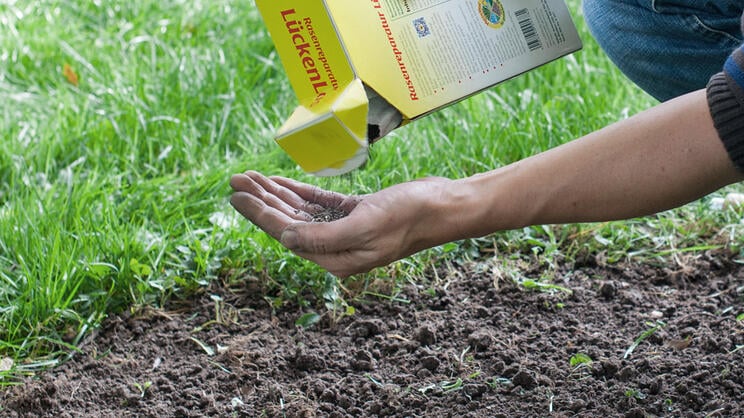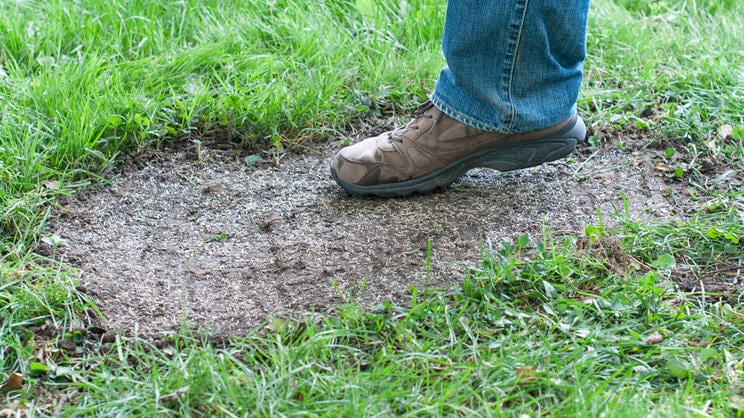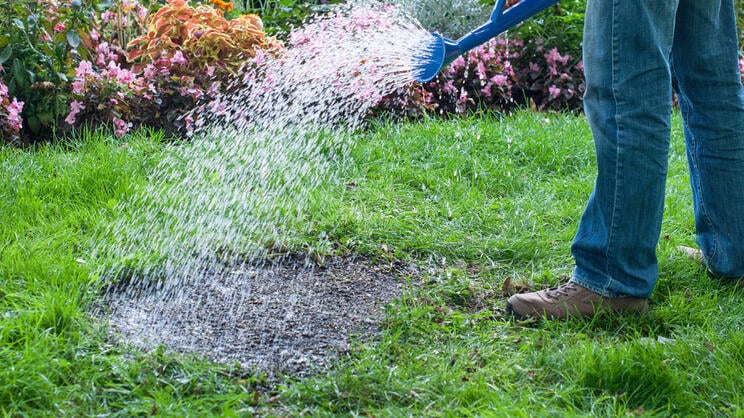Contents
Reseeding Your Lawn: A Step-by-Step Guide
Summer Wear and Tear on the Lawn
During the summer, the green lawn is used extensively—so it’s no surprise that, by the end of the season, some bald patches may appear. Reseeding helps restore the lawn’s density.
Whether it’s indentations from lounge chairs and umbrellas, worn areas in front of the goalpost, or a large bare spot under the kiddie pool—late summer and autumn are ideal times to reseed your lawn or fill in any gaps that have developed during the warmer months. Leaving these patches bare can invite unwanted weeds like dandelions and clover, which are difficult to remove once established. Here are some tips to help you reseed your lawn the right way.
Reseeding Your Lawn: Key Takeaways
- Best Time to Reseed: September is ideal.
- Preparation: Loosen the soil, remove weeds, moss, and stones, and level the area.
- Application: Spread the grass seed evenly and press it gently into the soil.
- Aftercare: Keep the area consistently moist until germination occurs.
When Should You Reseed Bald Spots in the Lawn?
September is a great time because the soil still retains some summer warmth, which aids in seed germination. It’s also cooler and less dry than in previous months, reducing the need for constant watering. That’s why late summer and autumn are the best times to reseed or sow a new lawn. However, spring reseeding is also possible.
How to Prepare the Soil for Reseeding
- Step 1: Mow the lawn.
- Step 2: Remove roots, dead plant material, weeds, and moss from the bare spots.
- Step 3: Loosen the soil using a rake or a scarifier.
- Step 4: For heavy clay soils, mix in some sand for better drainage. For sandy soils, mix in clay powder to help retain nutrients and moisture.
Tip: Not sure what kind of soil you have? A soil test can help you understand your lawn’s specific needs.
Step-by-Step: How to Reseed Your Lawn
Step 1: Loosen the Soil

Use a hand cultivator to loosen the soil on the bald spots. Remove any weeds, moss, and stones thoroughly, then level the surface.
Step 2: Distribute Grass Seed

Evenly distribute the seed over the prepared areas. To maintain a uniform look, use the same seed mix as the rest of your lawn. It’s a good idea to save leftover seed from a new lawn installation or at least note the product name and mix so you can repurchase it.
- Small patches: Can be reseeded by hand.
- Larger areas: A seed spreader helps ensure even distribution.
- Quantity: Refer to the package instructions for the correct amount of seed.
Step 3: Press the Seeds into the Soil

Gently press the seeds into the soil using your feet or a board. For high-visibility patches, consider using sod pieces taken from a less noticeable area of your lawn. You can also order individual rolls of sod online for this purpose.
Step 4: Water the Reseeded Area

Water the reseeded areas with a soft, even spray to avoid washing away the seeds. On low-humus soils, it’s helpful to cover the seed lightly with potting soil to prevent them from drying out too quickly.
- Keep the reseeded spots consistently moist until germination.
- Avoid walking on the area.
- Once the new grass reaches a height of 8–10 cm (3–4 inches), you can begin mowing.

